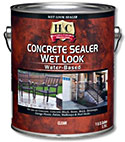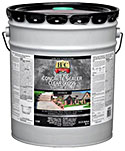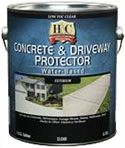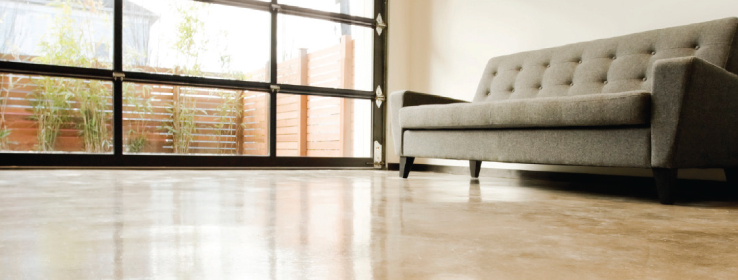By Jeff Wells, Training and Business Development Manager at H&C Products, The Sherwin-Williams Company
Before selecting a sealer, I suggest contractors ask three questions:
What are your customer’s expectations? Are they looking for low maintenance, increased durability and/or ease of application?
What do they want to achieve in color? Do they want to keep the color close to the application finish or make it deeper and richer?
What is their capacity for maintenance? Are they willing to perform periodic cleaning and recoating? Or, would they rather apply it and forget it?
Next, check the sealer's characteristics and performance aspects. Look for the VOC (volatile organic compounds) content, level of solids, yellowing aspects, appearance (from matte to high-gloss), resistance to oil and grease, slip resistance, permeability, coverage and, very important, life expectancy.
Check out the wide variety of H&C sealers in Sherwin-Williams stores.
Environmental regulations increasingly demand products with low volatile organic compound (VOC) content. In general, water-based sealers satisfy this need more than solvent-based sealers. However, thanks to Sherwin-Williams and H&C technology, low VOC (must be less than 50 g/L based on ASTM D6886) solvent-based sealers are now available.
 H&C® Concrete Sealer Wet Look. A water-based, high-solid content exterior acrylic sealer that's environmentally compliant. Produces a tough, durable finish. Can be applied to previously coated or bare concrete. Dries to a transparent gloss.
H&C® Concrete Sealer Wet Look. A water-based, high-solid content exterior acrylic sealer that's environmentally compliant. Produces a tough, durable finish. Can be applied to previously coated or bare concrete. Dries to a transparent gloss.
Ideal for patios, driveways and pool decks.
 H&C® Low VOC (must be less than 50 g/L based on ASTM D6886) Concrete Sealer Clear Gloss Solvent-Based. Made with exempt solvents compliant in VOC-regulated areas. This unique product can be used as a cure-and-seal, allowing application 72 hours after a concrete pour.
H&C® Low VOC (must be less than 50 g/L based on ASTM D6886) Concrete Sealer Clear Gloss Solvent-Based. Made with exempt solvents compliant in VOC-regulated areas. This unique product can be used as a cure-and-seal, allowing application 72 hours after a concrete pour.
Ideal for exterior concrete driveways, pool decks, patios, garages and athletic courts.
 H&C® Concrete & Driveway Protector. A clear, water-based siloxane water repellent designed to protect bare concrete and masonry surfaces. Its formulation allows for easy application and cleans up with soap and water.
H&C® Concrete & Driveway Protector. A clear, water-based siloxane water repellent designed to protect bare concrete and masonry surfaces. Its formulation allows for easy application and cleans up with soap and water.
Ideal for driveways, walkways, pool decks and garage floors.
In general, acrylics form a thin protective film on the concrete surface and are highly breathable. Penetrating sealers react with concrete to shield against moisture penetration and de-icing chemicals.
Here are specific characteristics of sealers designed for light commercial and residential applications:
Water-based acrylic sealers. These are highly breathable and easy to apply. They dry quickly, clean easily after application, have low VOC (must be less than 50 g/L based on ASTM D6886) content compared with conventional products, and won't yellow. They leave a clear, although somewhat waxy, surface that is close to the original color application. However, they also tend to have lower performance and a shorter life span than other sealers.
Solvent-based acrylic sealers. These are also easy to apply and very fast drying, and they provide good penetration; stain resistance; excellent clarity; a deep transparent finish; and enhanced, richer color. Cure-and-seals can be applied to freshly poured concrete and may result in a wet look depending on your product choice. However, solvent-based sealers have moderate to high odor. They also may yellow over time or bubble when applied to concrete surfaces with high temperatures, or when evaporation occurs too quickly and the surface dries before it cures. These are commonly used when dealing with stamping and decorative treatments cast into the concrete and can be applied in the first 72 hours of the concrete placement.
Silane/siloxane penetrating sealers. These are often used when water repellency is critical in horizontal or vertical concrete. Advantages include excellent penetration, breathability and good protection from salt, efflorescence and freeze-thaw cycles. Disadvantages: lower chemical resistance, some odor and no color enhancement. Applying a penetrating sealer followed by a solvent-based acrylic, however, can create a decorative surface with a very high sheen.
Densifiers. These tend to harden and compact the concrete and offer good penetration, reduced porosity and moisture migration, and excellent resistance to salt and heavy mechanical traffic, but result in little sheen with no color enhancement.




